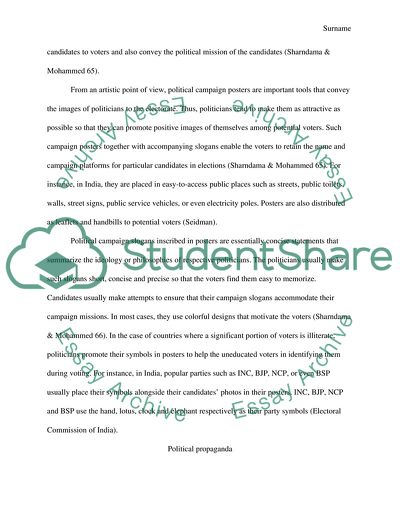Cite this document
(System of India Election Campaign Term Paper Example | Topics and Well Written Essays - 4000 words, n.d.)
System of India Election Campaign Term Paper Example | Topics and Well Written Essays - 4000 words. Retrieved from https://studentshare.org/politics/1835485-how-do-politicians-across-india-use-language-and-images-through-propaganda-posters-to-promote-themselves-and-their-beliefs
System of India Election Campaign Term Paper Example | Topics and Well Written Essays - 4000 words. Retrieved from https://studentshare.org/politics/1835485-how-do-politicians-across-india-use-language-and-images-through-propaganda-posters-to-promote-themselves-and-their-beliefs
(System of India Election Campaign Term Paper Example | Topics and Well Written Essays - 4000 Words)
System of India Election Campaign Term Paper Example | Topics and Well Written Essays - 4000 Words. https://studentshare.org/politics/1835485-how-do-politicians-across-india-use-language-and-images-through-propaganda-posters-to-promote-themselves-and-their-beliefs.
System of India Election Campaign Term Paper Example | Topics and Well Written Essays - 4000 Words. https://studentshare.org/politics/1835485-how-do-politicians-across-india-use-language-and-images-through-propaganda-posters-to-promote-themselves-and-their-beliefs.
“System of India Election Campaign Term Paper Example | Topics and Well Written Essays - 4000 Words”. https://studentshare.org/politics/1835485-how-do-politicians-across-india-use-language-and-images-through-propaganda-posters-to-promote-themselves-and-their-beliefs.


